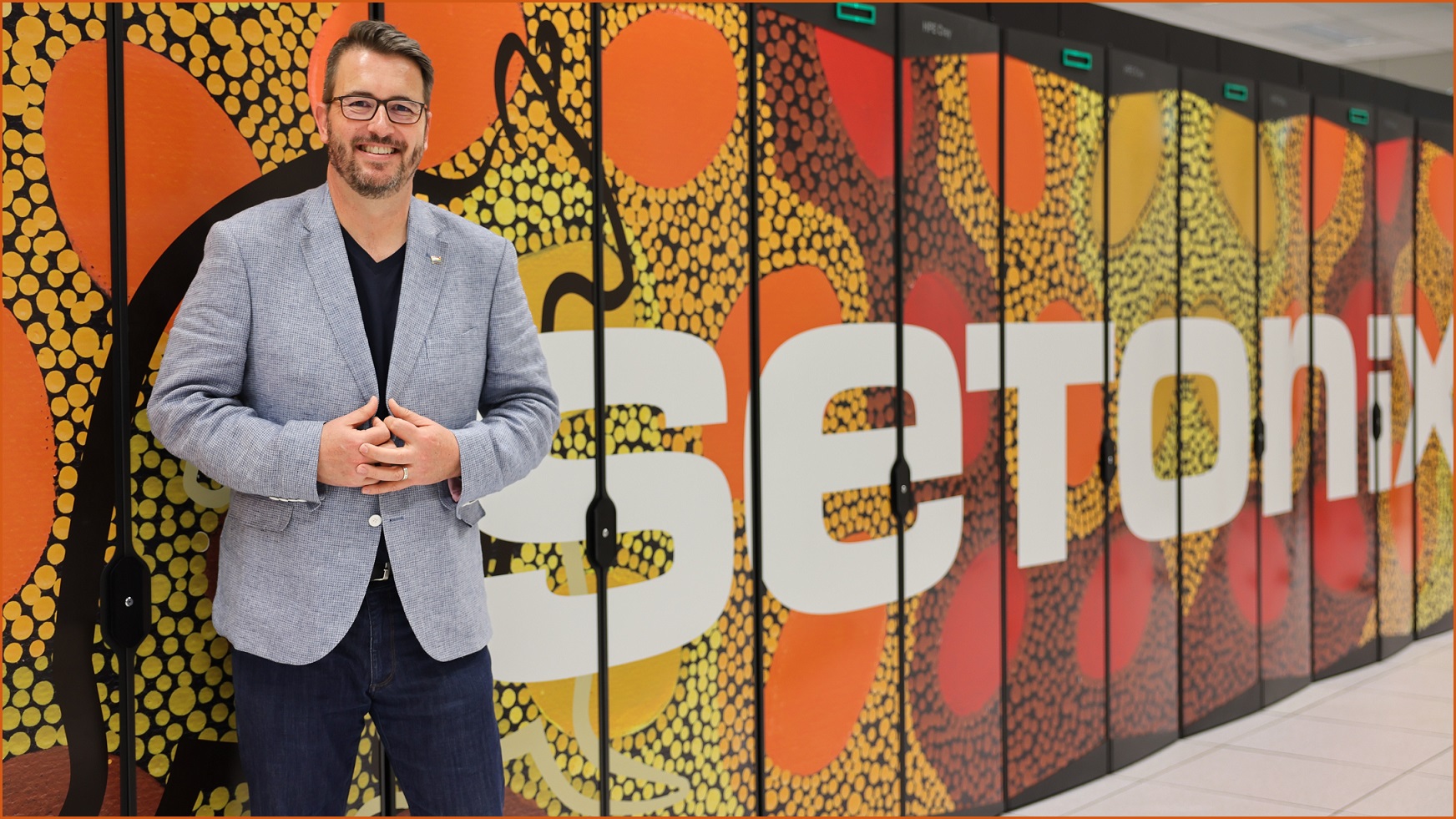Deployment of quantum computing ‘superchips’ is a coup for Perth’s Pawsey Supercomputing Research Centre – and another success for CEO Mark Stickells AM, whose Australia Day honour this year acknowledges Pawsey’s evolution into a global AI and quantum powerhouse.
Announced last month, Pawsey’s partnership with AI and quantum chipmaker Nvidia will see the facility – which was founded in 2000 to provide computing support for four WA universities and CSIRO– deploy eight nodes of Nvidia’s Grace Hopper Superchip, enabling researchers to use Nvidia’s CUDA Quantum platform to explore new quantum computing applications.
Named after mathematician and computing pioneer Grace Hopper – credited, among other things, with making computers more accessible by inventing the concept of programming languages like COBOL – the chips are Nvidia’s latest step in enabling the ultra high-speed supercomputing that has become fundamental to training ever more capable generative AI (genAI) large language models (LLMs).
They are the same chips used in Germany’s Jupiter supercomputer – billed at launch as “the world’s most powerful AI system” – but Pawsey is deploying twice as many nodes, an achievement that, Stickells told Information Age, will position it as “a sort of national test lab, and part of the national ecosystem around quantum.”
“We’re at the early stage of what [quantum computing] might look like in the future,” he explained, echoing Industry Minister Ed Husic’s recent dubbing of quantum technologies as the “future of ‘made in Australia’.”
“That role of high-speed, high-data, high-complexity computing environments that we operate,” Stickells explained, “[is at] the very intersection with the software community trying to develop the type of algorithms that can run off quantum architectures – but those architectures are still not mature and stable enough to operate, so there’s an interceding role for emulation.”
Quantum simulation is only the latest standout application for Pawsey, which evolved from shared data centre to supercomputing powerhouse over the past decade as it became the anchor data centre for the Square Kilometre Array (SKA) radio telescope, whose capacity to generate exabytes of data per month was met with the installation of Pawsey’s Setonix supercomputer.
Surging demand for genAI computational power has driven demand for specialised CPUs that has proved a bonanza for Nvidea – which recently stunned financial markets after announcing fourth-quarter revenues had surged 265 per cent year on year and more than tripled from just six months earlier.
Those figures reflect the growing importance of supercomputing centres – and, Stickells said, we’re only just getting started.
“We’ve had AI for decades, and we’ve been training computers to do things for us faster than we can perhaps do them in a linear way,” he explained.
“But the sheer power of computers now, and the breadth of data available, and the dynamic way it can interact, is bringing that to what appears to be approaching a human sort of cognisance.”
Building a new intelligence
As the titular head of a team of computing and research experts with broad technical and subject matter expertise, Stickells admits that his friends jokingly pointed out the “irony” of his recent Australia Day honours for significant services to science and IT – given that his own qualifications are in the liberal arts, with a BA in English Literature and a Master of Educational Administration.
“I’ve worked in science and research but I don’t have a hard tech degree,” he said, admitting that impostor syndrome occasionally rears its head.
“I’m a skilled generalist and translation advocate who’s got a curious mind, and I get to work with brilliant people – but I’m not a subject matter expert in a deep way.”
“The irony for my group of friends is that the Arts grad amongst all these engineers and lawyers has probably the coolest job of all.”
The AM, he added, helped draw crowds when he recently agreed to give an informal talk about his work at his father’s retirement village.
News about the award came out after the presentation had already been announced – and his father “told everyone in the village,” Stickells laughed. “Now they’ve got more people coming, and he thinks he should have sold tickets.”
As genAI becomes part of everyday life for young generations – and even trickles down to older citizens who often feel alienated from new technology – Stickells remains acutely aware of the importance of bridging the yawning gap between back-end AI and quantum architecture, and relatable real-world use cases.
“Experimental physicists have always been at the leading edge of advances in computing,” he explained, “but we’re seeing now that many more domains are getting more access to data – and, therefore, computational methods to unlock their science.”
“I see a future of needing expertise in computing infrastructure and data management to support not just radio telescopes, but increasingly in areas of health and human disease, and environment, and other industries will be flooded with data and the need to analyse things in real time.”
Pawsey’s location in Australia adds more value, Stickells said, noting the growing importance of sovereign capability in globally important industries like AI and quantum, a point that Gartner recently flagged in predicting that 70 per cent of businesses would consider digital sovereignty as a key issue when choosing genAI platforms.
“It’s a really interesting time that we’re at,” Stickells said.
“The traditional levels of our economy are going to be tested through this, and it’s getting ahead of governments and regulators.
“But I remain an optimist, and I hope and trust in the value of human wisdom.”










